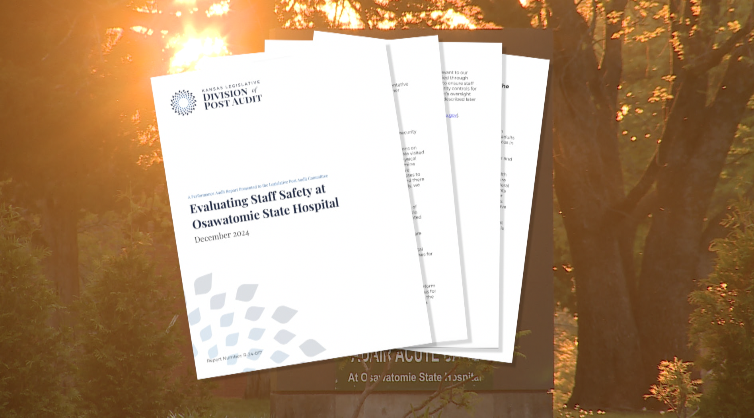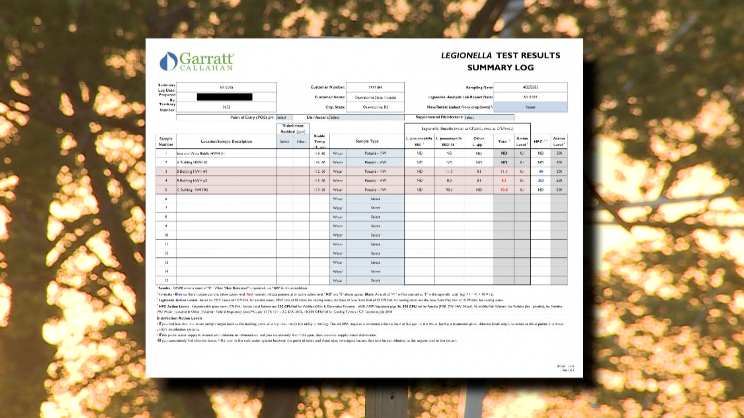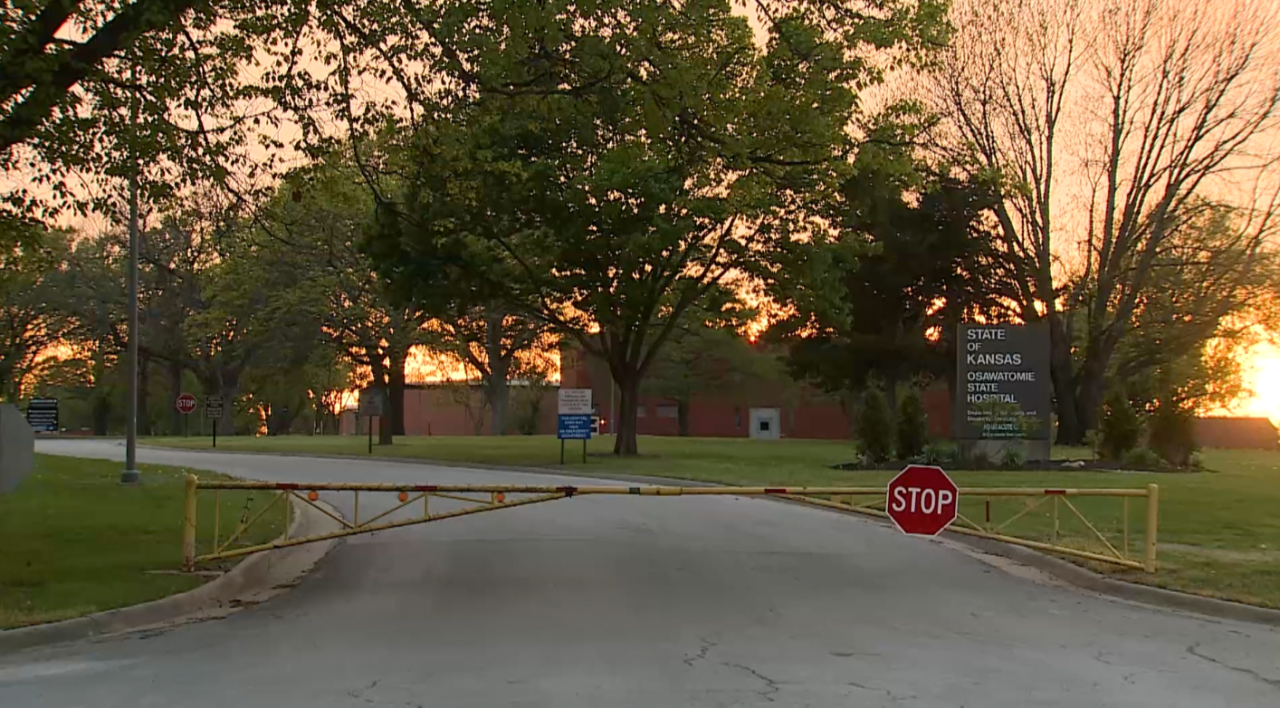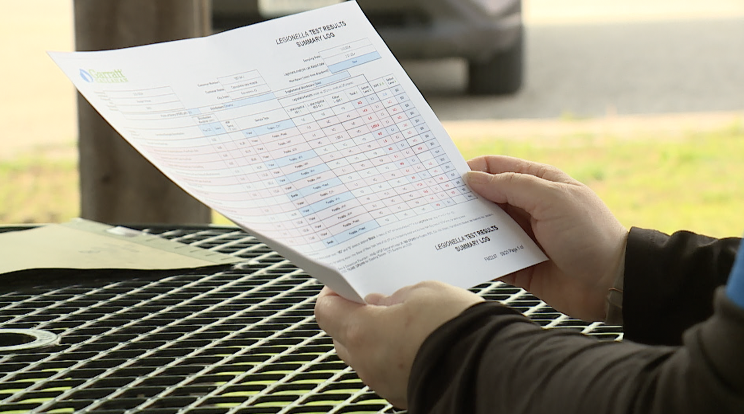KSHB 41 reporter Ryan Gamboa covers Miami County in Kansas and Cass County in Missouri. He also covers agricultural topics. Share your story idea with Ryan.
—
The Kansas Department for Aging and Disability Services has not responded to KSHB 41's request for comment about May 2025 legionella test results at the Osawatomie State Hospital.
RELATED | 2024 test showed 'out of control' levels of legionella in Osawatomie State Hospital water supply
In April, KSHB 41's Miami County beat reporter, Ryan Gamboa, confirmed documents, provided by a source, that the Osawatomie State Hospital water system tested "out of control."

Last week, KSHB 41 received documents through a Kansas Open Records request that an April 23, 2025, water sample came back with high readings of Legionella in hospital water heaters in B and C buildings.
RELATED | Osawatomie water not impacted after 2024 State Hospital Legionella detection
"B building is where our most vulnerable patients are," former Mental Health Technician Katie Jackson told KSHB 41 in April when presented with last year's water results. "Out of control, that's bad."

According to the Centers for Disease Control and Prevention, Legionella commonly grows in water systems. Elevated levels of exposure, such as breathing in water droplets, can cause a severe type of pneumonia called Legionnaires' disease. It can also cause a mild flu-like illness named Pontiac fever.
RELATED | Safety concerns lead to high staff turnover at Osawatomie State Hospital
KSHB 41 has extensively covered issues surrounding safety and security outlined in a Kansas State Legislative Audit, released in December 2024.

According to the documents, three out of five samples tested positive, according to Garratt Callahan, a California-based testing company.
Garratt Callahan's testing standards align with the CDC, which says any amount of legionella is considered "unsafe," it was stated in the report's comments.

The water sampler suggested there could be a biofilm still present in much of the system's pipes, considering previous testing done at the facility.
It is recommended that there be a chemical disinfection ordered to penetrate the biofilm and kill legionella in the system.
RELATED | Inside Osawatomie State Hospital, preselected staff speak, others fear administration
"Treated water is not designed to be sterile," said Charles Haas. "There are inevitably microorganisms in there. For the most part, they are relatively innocuous except for highly susceptible people."
Haas is an LD Betz Professor of Environmental Engineering at Drexel University.
With 40 years of experience, he's an instructor and researcher, with a specialty in the intersection between the environment in water, microorganisms, and human health, assessing the risks in organisms and developing ways to control those risks.
"It’s impossible to get to zero risk," he said.

Osawatomie State Hospital administration told KSHB 41 in April, there have been no known illnesses related to Legionella.
RELATED | Rural Revival | Osawatomie State Hospital's economic influence on small-town Kansas
The Miami County Health Department also confirmed there were no known illnesses.
Since the initial report, multiple former and current employees have expressed their concern with the water to KSHB 41's Miami County beat reporter, Ryan Gamboa.

Two current employees, who declined an interview out of fear of retaliation, told Gamboa they were not notified in May about the new test results.
RELATED | Osawatomie State Hospital staff plagued by harassment, fear culture
Hospital administration also did not notify staff or patients at the larger legionella water test reading from February 2024.

"Looking back on that, that is probably something that we should’ve done," said Osawatomie State Hospital Superintendent Ashley Byram. "But we were following the direction of KDHE. There is a regulation that says that since we are not a water distribution center that we do not have to."
According to Haas, there's no state and federal regulations that require a building operator to notify tenants, employees or other individuals there is legionella in the water.
"It's a void that we have in how the sytems are regulated. Really, every building owner is on their own," he said. "It would be best practice [to notify]."

Legionellosis mimics common respiratory illness and can develop into pneumonia in susceptible populations.
RELATED | Keys, alarms, patrols: Security issues a concern at Osawatomie State Hospital
Gamboa asked Haas about illness management without notification to patients and staff.
He responded, "Without keeping health status records on individuals who are doing diagnostic tests, it's really difficult to tell whether somebody's had Legionellosis or not, and even the diagnostic tests themselves are not perfect. They'll miss some positives on diagnosis."

The CDC Legionella toolkit states the organism can be killed at 140 degrees Fahrenheit in water heaters.
Documents obtained by KSHB 41 report B Building Hot Water Heaters #1 read 112 degrees and #2 at 115 degrees, C Building's Hot Water Heater #2 tested at 119 degrees, below what CDC's legionella toolkit states that would kill the bacteria.
RELATED | Osawatomie gets funding for a new water treatment plant
"If the temperature is raised, but not high enough to kill the Legionella, it can actually multiply within buildings to higher levels than were released from the water treatment plant," added Haas.
The Osawatomie State Hospital purchases its water from the city.

City Manager Bret Glendening told KSHB 41 in April that the city has not had any positive, elevated levels of legionella.
"The building owner really is responsible for the water quality from the point where it enters the building past the water meter all the way up to the individual tap or the fixture where it's being used, and so the building owners and managers need to pay attention to that," Haas explained.
RELATED | Kansas lawmakers say conditions at Osawatomie State Hospital are 'administrative' issue
In the documents obtained by the records request, KDADS provided numerous dates the hospital is flushing its water lines.

Additionally, Haas says if that isn't working, he'd suggest boosting chlorine in the hot water lines or raising water temperatures to burn it out of the system.
KSHB 41 reached out twice to KDADS requesting comment and answers about the process and waiting on a response.





